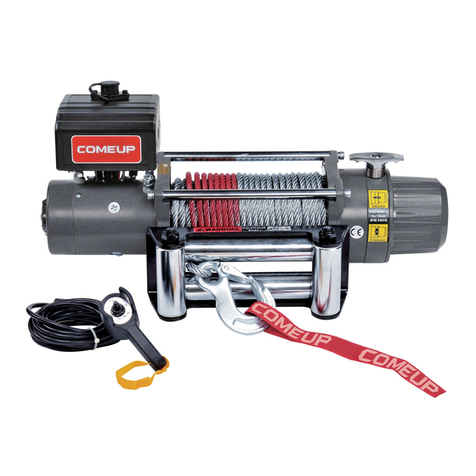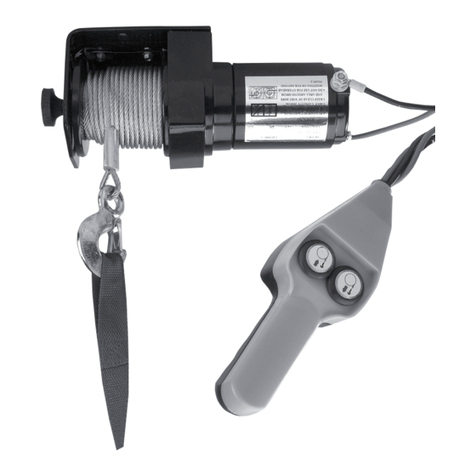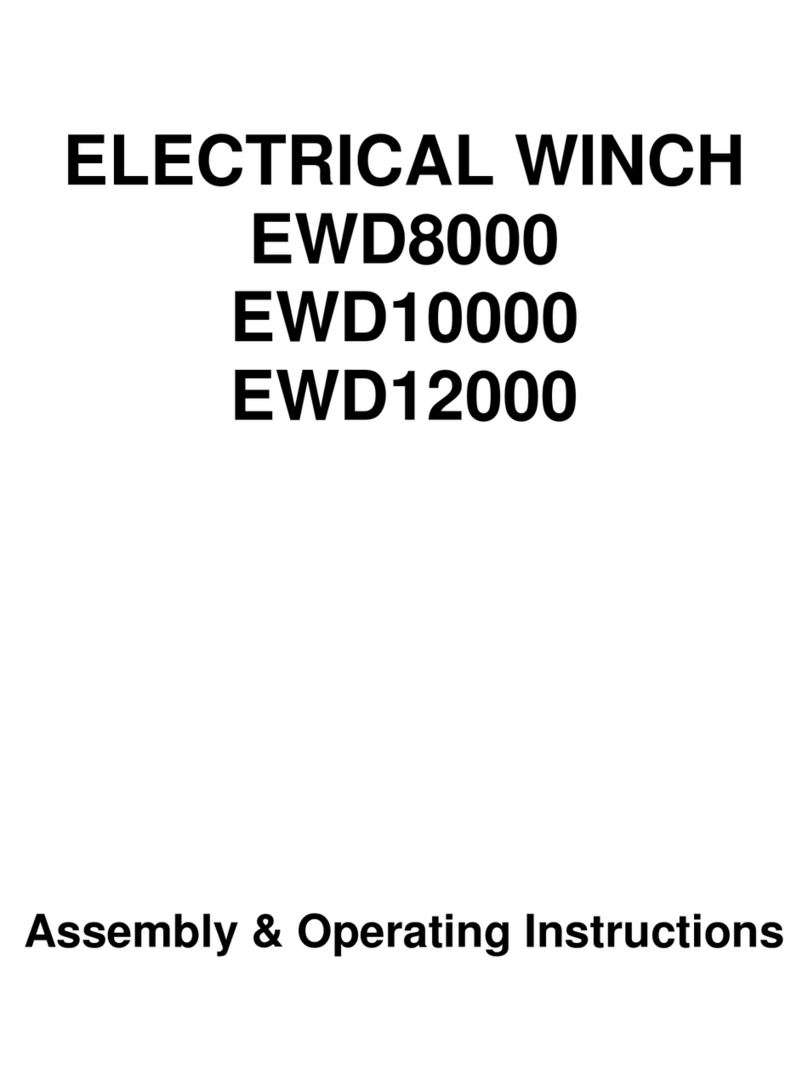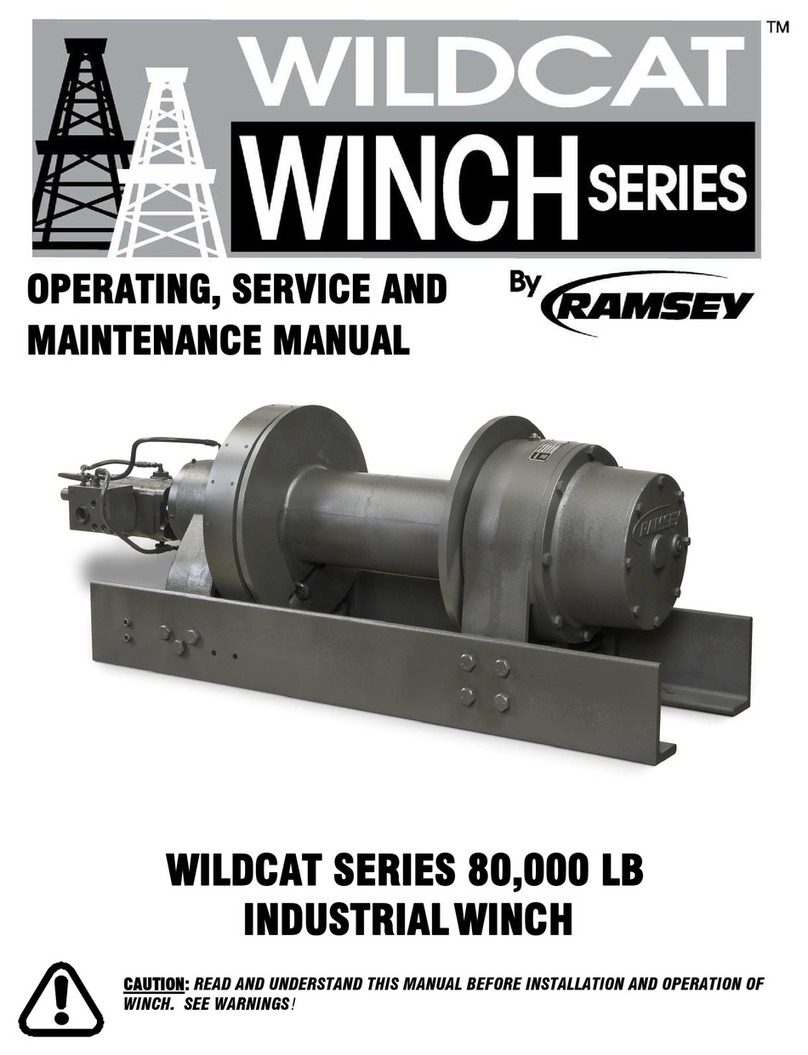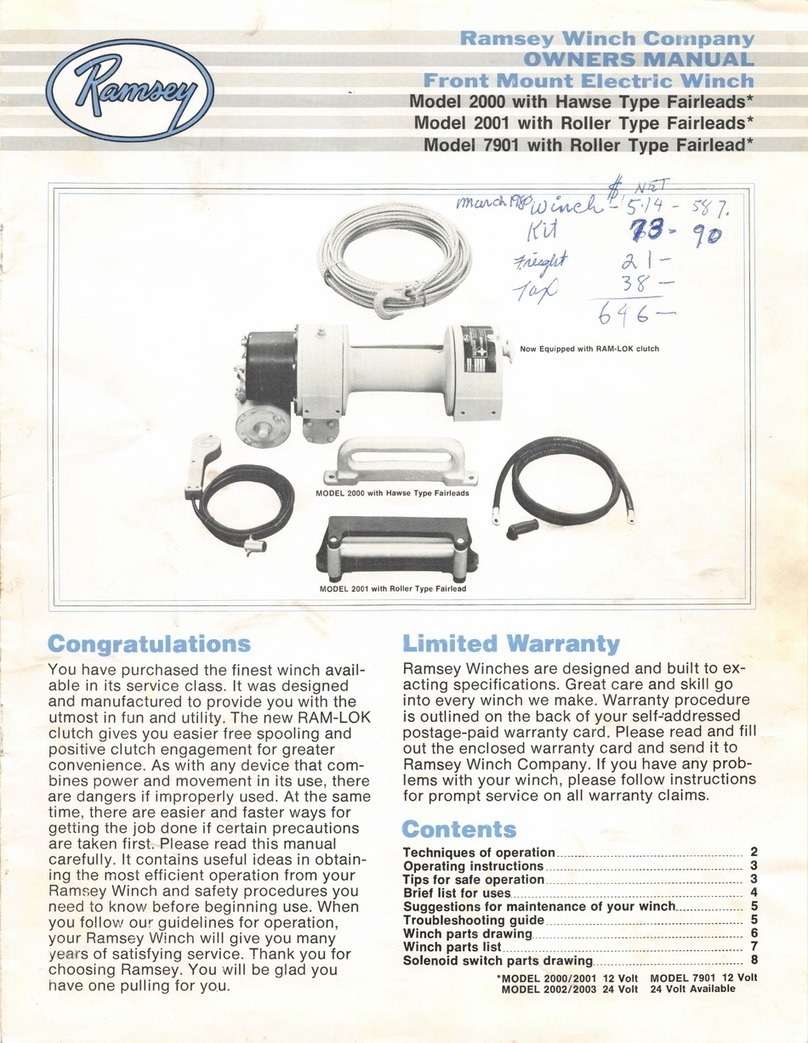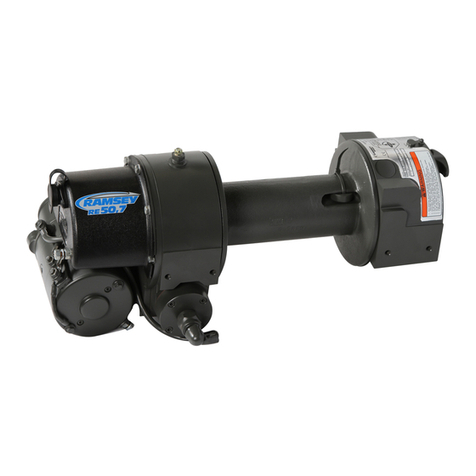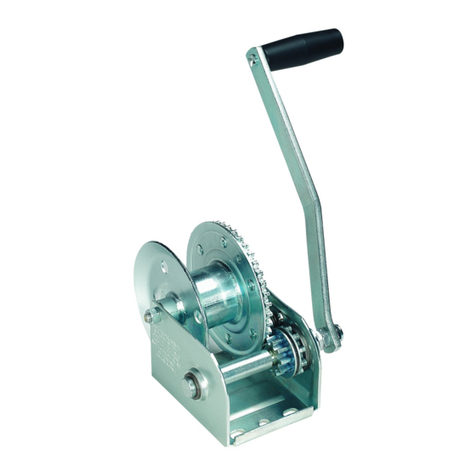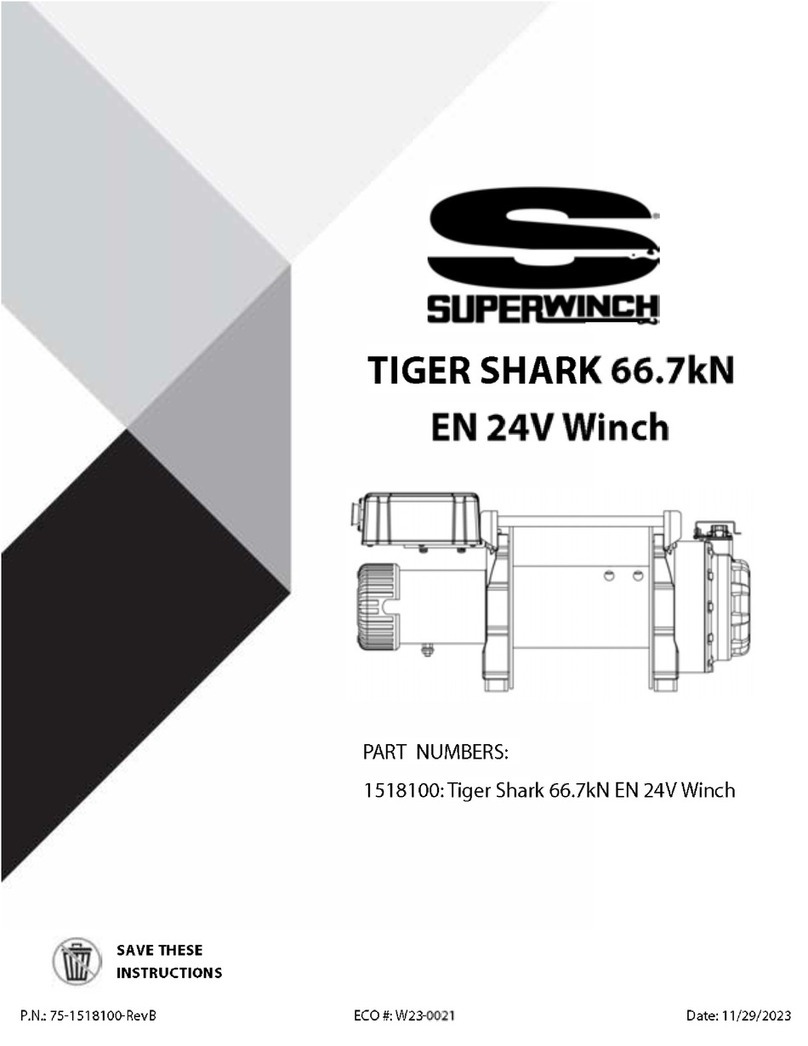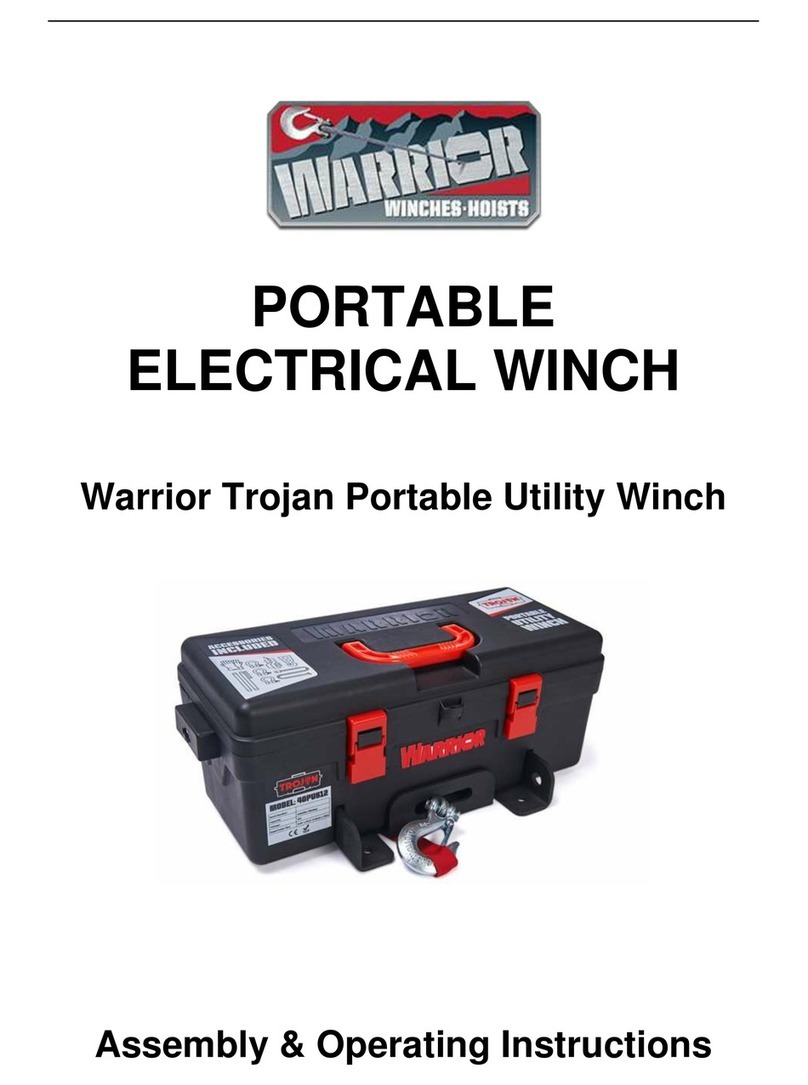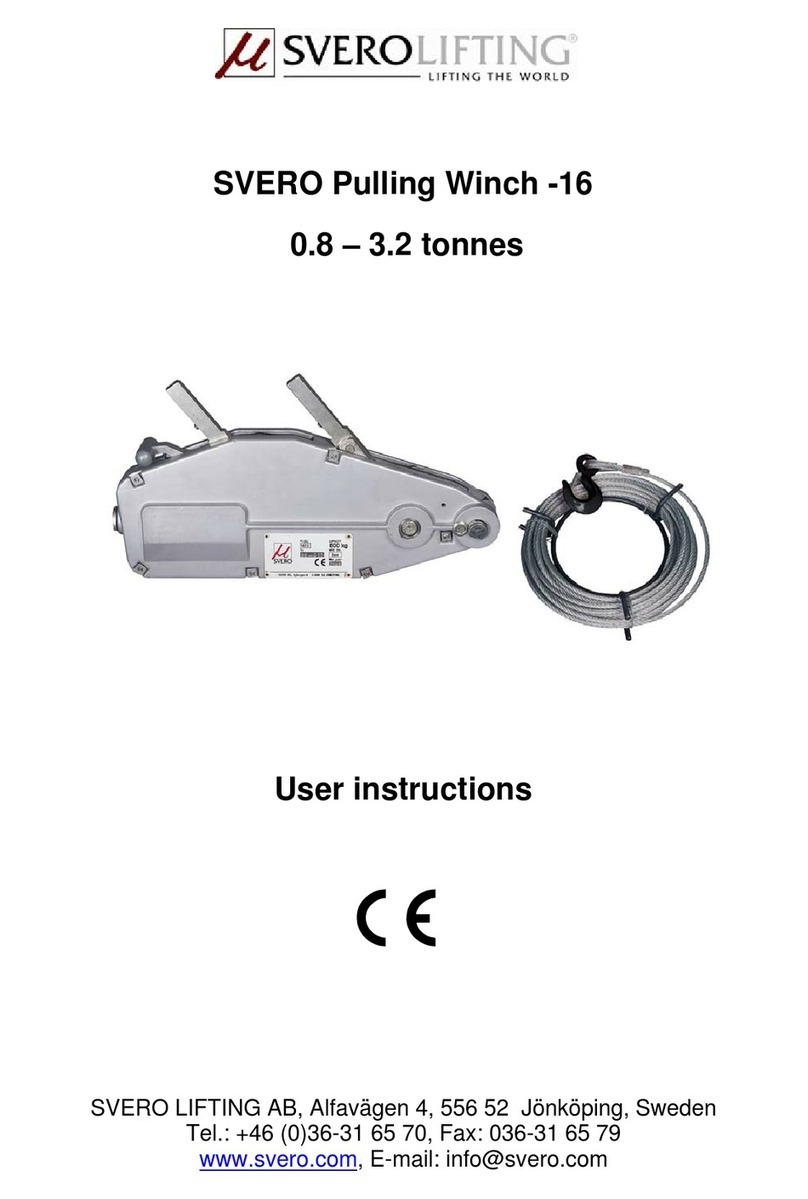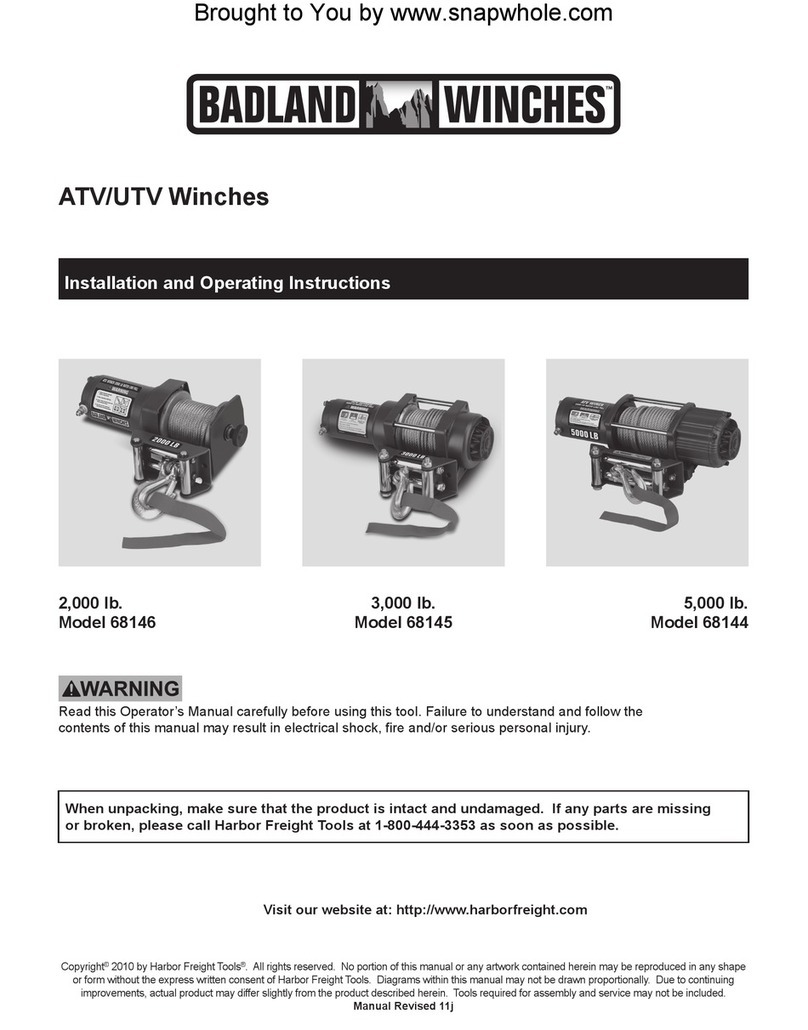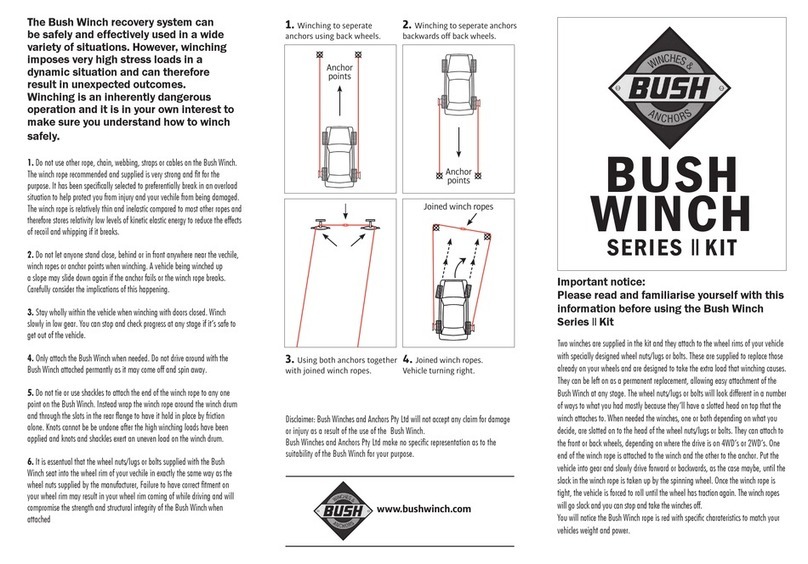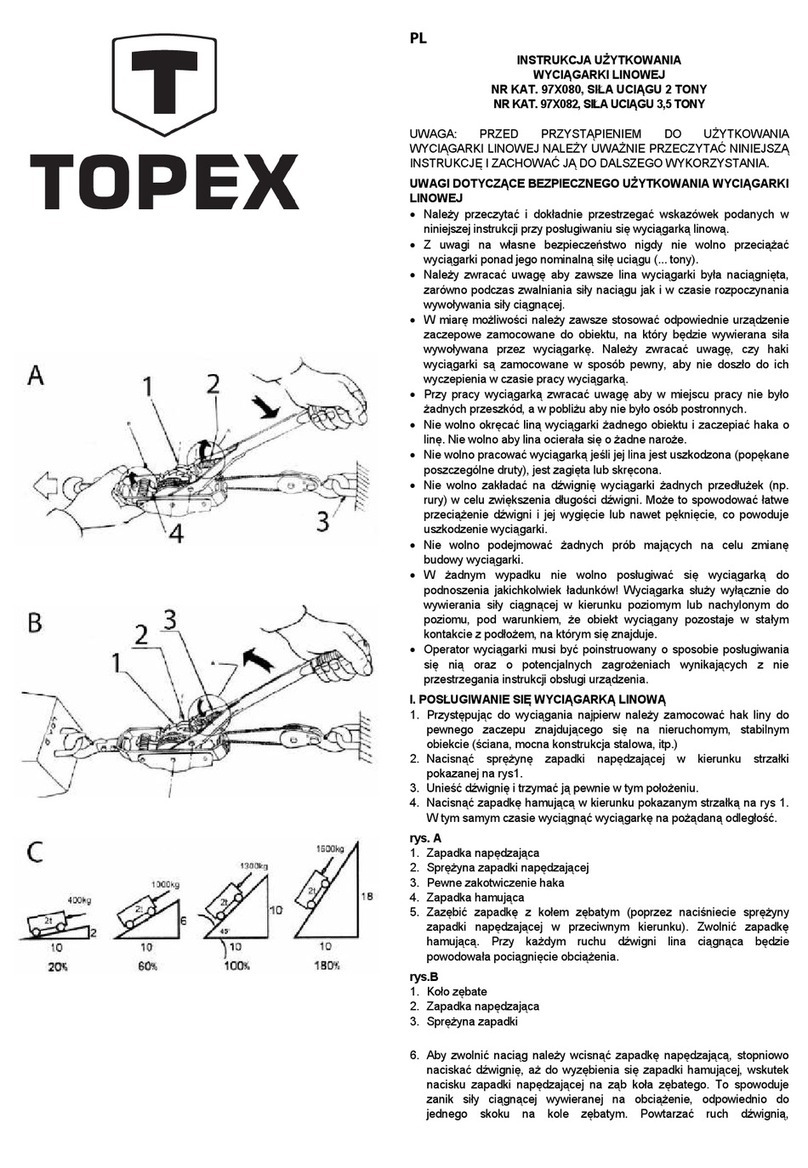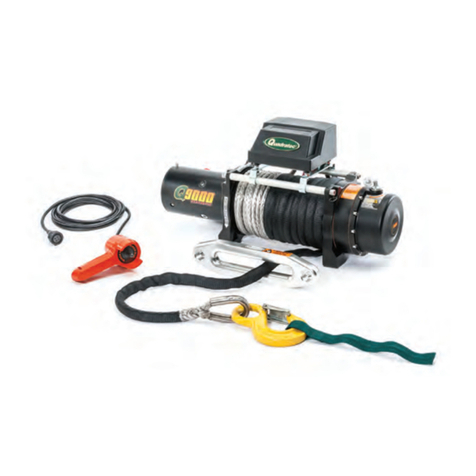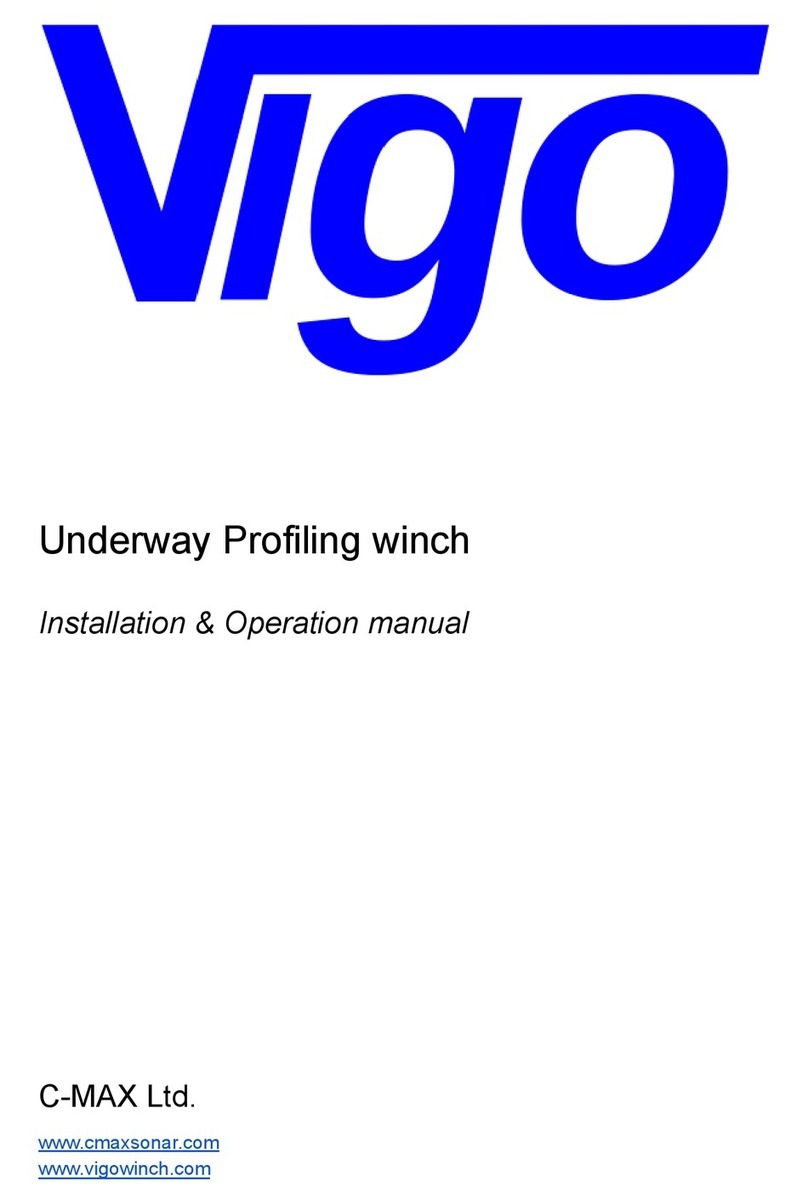GUIDE TO SAFE WINCHING..............................................................................................3
WARNING ...........................................................................................................................4
INTRODUCTION.................................................................................................................4
WINCH RATING..................................................................................................................4
EXAMPLE............................................................................................................................4
FITTING INSTRUCTIONS...................................................................................................5
TYPES OF WINCH MOUNTING .........................................................................................5
BEHIND THE CAB...........................................................................................................5
Flush with Vehicle Deck using bracket part no. BM0001..............................................5
Above Deck Mounting...................................................................................................6
Front Mounting .............................................................................................................7
LABELS...............................................................................................................................7
WIRING ...............................................................................................................................7
WANDERLEAD REMOTE SOCKET................................................................................8
EMERGENCY STOP .....................................................................................................10
LOAD LIMITING SWITCHES.........................................................................................10
TESTING...........................................................................................................................11
TO OPERATE WINCH.......................................................................................................11
FREE SPOOLING..........................................................................................................12
CAPACITIES .....................................................................................................................12
SERVICE/MAINTENANCE................................................................................................12
REGULAR MONTHLY MAINTENANCE ........................................................................12
Yearly maintenance....................................................................................................12
OIL SPEC...................................................................................................................13
SPARES.....................................................................................................................13
CARE OF THE WIRE ROPE.............................................................................................13
WIRE ROPES ARE NOT COVERED BY WARRANTY..................................................13
FITTING WIRE ROPE....................................................................................................13
TROUBLE SHOOTING TIPS.............................................................................................15
WINCH PARTS LIST.........................................................................................................18
SOLENOID ASSEMBLY PARTS.......................................................................................19
TEST PROCEDURE FOR SOLENOIDS ...........................................................................20
TEST PROCEDURE FOR MOTOR...................................................................................21
INSTRUCTIONS FOR OVERHAUL OF RAMSEY.............................................................22
MODEL DC-200 SERIES RAM-LOK .................................................................................22
DIS-ASSEMBLY.............................................................................................................22
RE-ASSEMBLY..............................................................................................................26
WARRANTY......................................................................................................................29
APPENDIX.........................................................................................................................30
BATTERIES...................................................................................................................30
